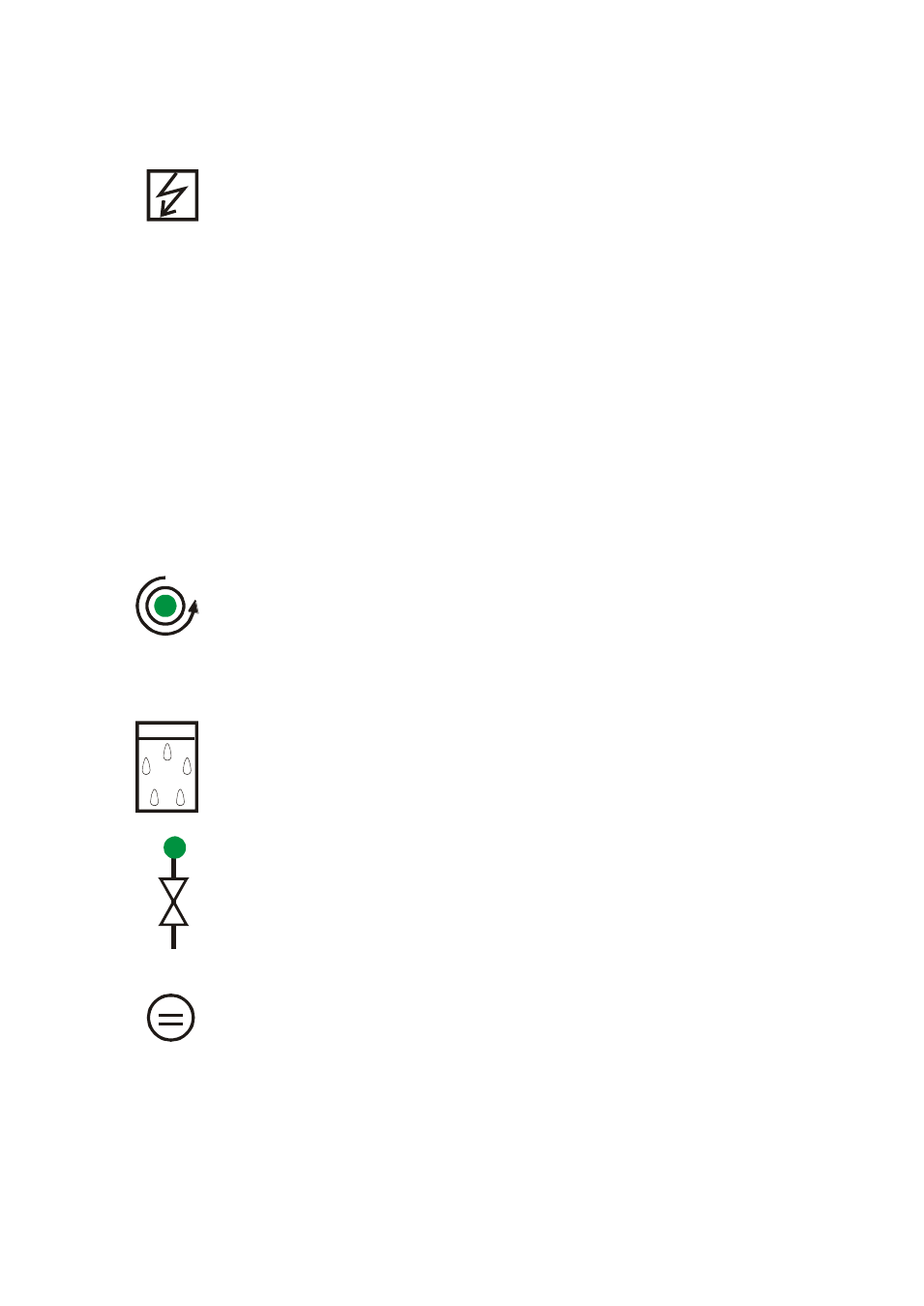Nortec SynPur User Manual
Page 15

Created: 21.12.2006
Changed: 21.03.2007
Printed: 02.03.2009
page 15 of 37
Fault
If the LED Fault lights up the air humidification is automatically interrupted and only
resumed after the fault has been corrected. Only the circulation is kept on to
prevent germination of the water.
Possible causes of a fault are:
-
Infeed water pressure is too low
-
Additive pressure is too low
-
Outlet pressure of the circulation is too high
-
Motor protection of the circulation was triggered
-
Conductivity of the demineralized water is too high
-
Product quality is not O.K. (conductivity too high)
-
Product quality is not O.K. (conductivity too low)
Circulation
In extended downtimes germination of the water takes place, which can be harmful
to health and can damage the equipment. To counteract this, the SynPur is
equipped with a circulation. Regardless of whether humidification is active or not,
this circulation is turned on every 8 hours for approx. 15 minutes and ensures
degermination of the synthesizer cartridge. During this period the LED „Circulation„
is lit.
Additive
In n
ormal operating mode the LED „Additive“ is lit and indicates that adequate CO
2
is still present. If a drop in the gas pressure occurs (e.g. when the CO
2 bottle
is
empty), the light goes out and a collective fault message is output.
Operation
This LED is lit when the SynPur is in operating mode. If no acceptance occurs, the
light goes out.
DI
The LED „DI“ is lit when the DI water is above the specified threshold value. In
conjunction with the LED „Service,“ this means that the conductivity of the DI water
is slightly increased and the synthesizer cartridge should be replaced soon. If the
conductivity of the DI water exceeds the second threshold value, the LED‘s „DI“
and „Fault“ are lit. To prevent precipitation of minerals, the air humidification
system is shut off simultaneously. The synthesizer cartridge must be replaced
before operation can be resumed (for more information on replacement see
Section 6.2).
